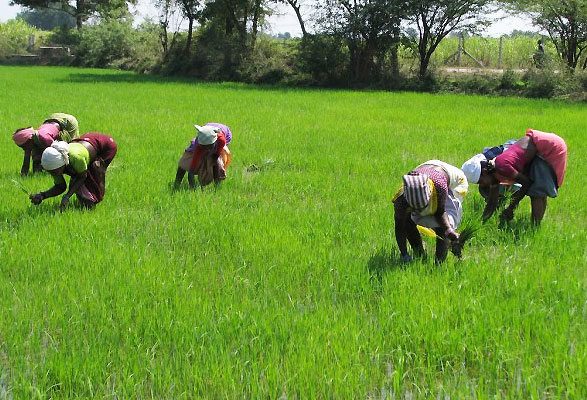Smallholder rice farmers in Nigeria, Ghana and Uganda are still faced with a number of challenges including relying on rain-fed farming, use of farmer-saved seeds for subsequent production, lack of machinery to support commercialisation of rice production, and low use of fertilisers, a survey reveals.

The study further shows that with climate change, there are many rice farms that are being abandoned in the respective countries due to high accumulation of salt leading to salinity. This leads to environmental degradation.
These results confirm the fact that as African farmers are beginning to innovate, increase productivity, and drive unprecedented progress across entire economies, climate change – as well as a surge of new pests and diseases – threatens these gains.
According to the survey conducted by the African Agricultural Technology Foundation (AATF), abiotic constraints associated with soil nutrient depletion and imbalances (salinity, nutrient deficiencies and toxicities) and water availability (drought and excess water) contributes significantly to low rice productivity in Nigeria, Ghana, Uganda and many more African countries.
The survey shows that only 9 per cent and 10 per cent of sampled rice producing communities in Nigeria and Uganda respectively practiced exclusive irrigated rice farming. All the three countries are affected by droughts since most of the farmers practice rainfed agriculture leading to low yields.
Further, more than half of the sampled farmers in Ghana (52%), Nigeria (78%) and 83% in Uganda used farmer-saved seeds for subsequent production. The high use of saved seeds has been linked to low yields in crops. Other reasons include lack of money to procure other inputs (fertilisers, herbicides and insecticides) to guarantee yields.
In addition, the report indicates that only 20 per cent of sampled farmers in Uganda applied some form of fertiliser to their rice farm and the quantities are as low as 15kgs per hectare. The use of fertiliser, the report shows, is very low among farmers in Uganda because most farmers in the country believe that their soils are fertile and there is no need to use chemical fertilisers as these are suspected to destroy the soils.
However, there is an emerging trend of youth increasingly taking up roles in rice farming in the three countries. According to the survey, a good representation of youth (Ghana 46%, Nigeria 52%, Uganda 47%) are involved in rice farming – an indication of labour availability and signals the sustained future of rice farming.
“For Africa to achieve desired growth in its agriculture sector and to create jobs for the youth and achieve food security, there is need to put in place reforms necessary to unlock agriculture’s potential. These reforms include access to land, improvement of infrastructure, enhancement of extension services and farmer education, access to markets, finance and good quality seeds and adoption of new technologies,” says Dr. Kayode Sanni, Rice Project Manager at AATF.
Rice is an important food staple and a major source of carbohydrates in Sub-Saharan Africa (SSA) region. In Nigeria and Ghana, it is the second most important cereal consumed and the third in Uganda. Yet, the crop is grown on a meagre 11 per cent and two per cent of Nigeria and Ghana’s arable land respectively; while in Uganda, it is grown on a total land area of 95,277ha. In all three countries, 80 per cent of the rice is produced by small scale farmers cultivating an area less than three hectares.
Despite the high number of people engaged in rice production and the area of land allotted for rice farming, the average yield of 2.1 MT/ha during the period of 2012 – 2018 (USDA, 2018), is still extremely low compared to yields of 5.0 MT /ha in Asia. This low yield has led to the three countries being net importers of rice especially from Asia. Further, this yield rate remains far below the potential productivity for rice in the region and this is attributable to abiotic and biotic stresses.
According to Dr. Sanni, there is potential for increasing the yields of rice in SSA through the development of improved rice varieties with the ability to do well and produce more grains per hectare under the different adverse environmental and soil conditions of SSA. Thus, contributing to reduction in the widened gap between supply and demand and imports of rice with their resultant economic and food security burdens.
The report recommends the need to invest in new farming technology for Africa – from better seeds to digital tools to machinery – as the best opportunity for transforming African agriculture into an engine of economic growth that will have benefits far beyond the farm sector; and use of new rice varieties and other innovations to ensure farmers can adapt to climate change, address the challenges to help them improve productivity.
